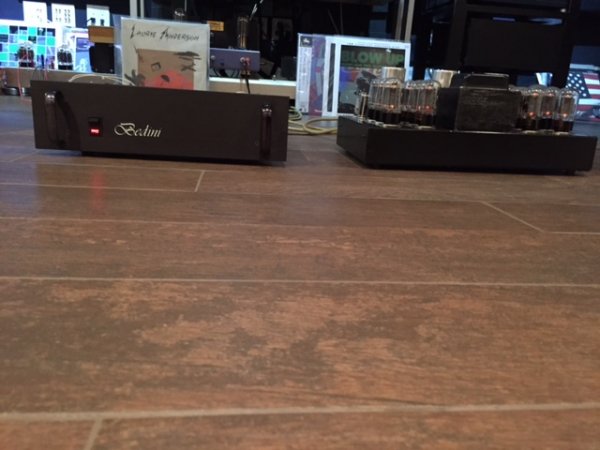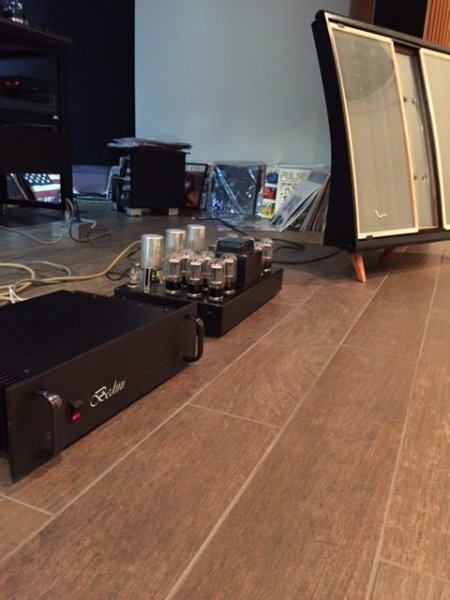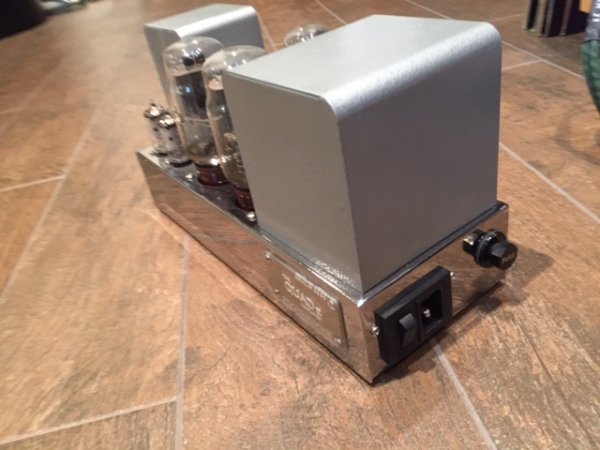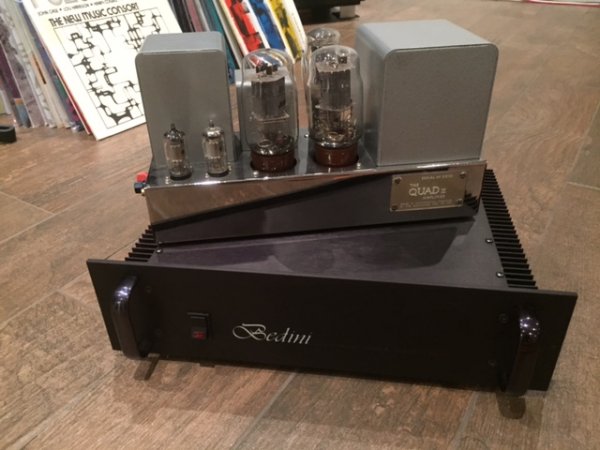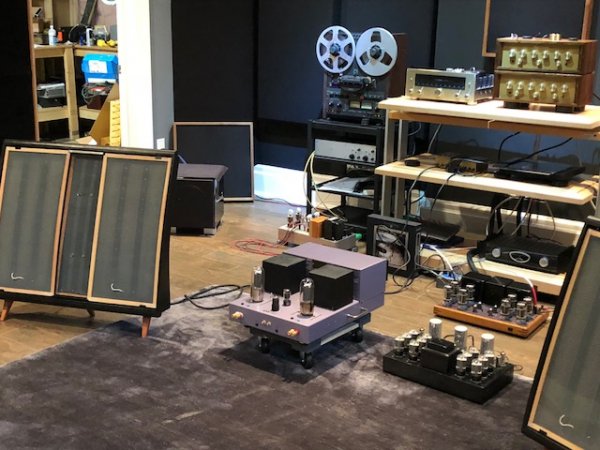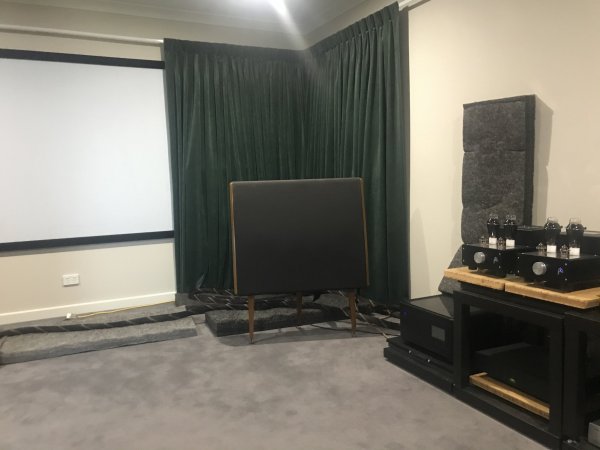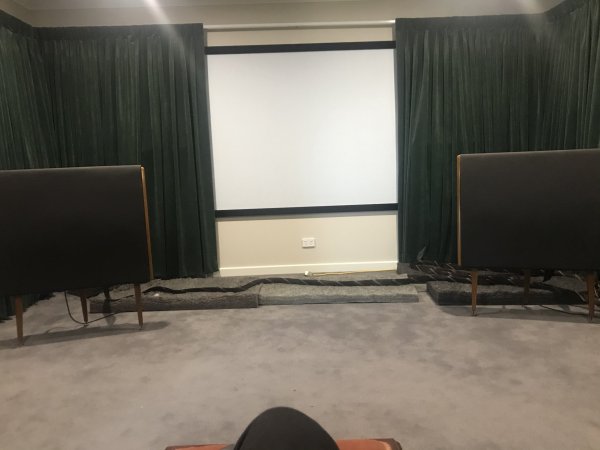meistersinger57
Well-Known Member
If one considers the excellent stereo amplifier CROFT model 7 R (regulated). It is a hybrid design with valves taking care of the 1st stage amplification and very high quality SS BUZ 900/905DP MAGNATEC Mosfets delivering the output, regulated HT with a 300VA torroidal PSU, with 50/55 watts per channel (input 12AX7 or - in my case - 12AU7), that easily drive my two pairs of stacked quads esl 57s. TUBE CAD Journal on "Hybrid Amplifiers" April/May 2001 :"The common approach is use tubes for voltage gain and MOSFETs or transistors for current gain. This arrangement appeals to our sense of fairness: tubes are happiest with voltage and woefully current limited; solid-state devices are current ebullient but fearful of over voltages. An exaggeration this, but not without a kernel of truth. Which solid-state device should be used in the output stage? The transistor wins in theory, but the MOSFET wins in practice is the quick answer. The transistor has a much greater transconductance which makes for a greater gain, which in turn allows for more feedback, which ultimately lowers more distortion. Yet, the MOSFET is used in most professional, high-power amplifiers because the MOSFET does not blowout as readily as the transistor does. Furthermore, the MOSFET is almost always used in hybrid designs due to its reputation for being more tube like in sonic character and because its gate represents a high impedance that is theoretically easier to drive than the transistor's base." ( http://www.tubecad.com/april_may2001/index.html )
Chris Beeching ( http://www.quadesl.com.articles/quad _stacking.html) says that "Also, by connecting them in parallel the overall impedance curve is considerably flatter, and hovers around 8 to 12 ohms rather than the 15-going-on-30ohm curve for a single panel", so a pair of quads ESL 57 when stacked in parallel, specially when driven by good "hybrid" MOSFETS amplifiers...anyway, MOSFETs being "CURRENT EBULLIENT" are happy with this "high impedance..." speakers...
In the TUBE's simplest configuration, triode amplifier, the plate current is function of grid voltage, as drain current is function of gate voltage in a MOSFET
The MOSFET, on the other hand, is less sensitive to shifts in the bias voltages, as it has a much lower transconductance. Furthermore, MOSFET output stages always require a much higher quiescent idle current, which increases the percentage of Class-A operation in Class-AB mix, which is all for the good, as the first watt of power is sonically the most important watt. Add to these benefits the advantage of virtually no thermal runaway, and the MOSFET appears to be the clear winner/.
MOSFET advantage TUBES in all aspects:
-Very higher transconductance (two magnitude order, typically 3,5 mhos)
-Direct load coupling (transformless) this mean higher bandwidth, less distortion, more damping factor.
-Better gain bandwidth product.
-Power bandwith one magnitude order higher than TUBES.
-Easy paralleling.
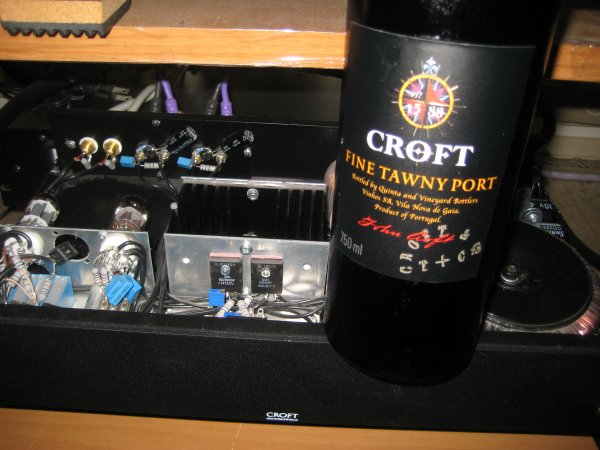
Last edited: Nov 24, 2018
Chris Beeching ( http://www.quadesl.com.articles/quad _stacking.html) says that "Also, by connecting them in parallel the overall impedance curve is considerably flatter, and hovers around 8 to 12 ohms rather than the 15-going-on-30ohm curve for a single panel", so a pair of quads ESL 57 when stacked in parallel, specially when driven by good "hybrid" MOSFETS amplifiers...anyway, MOSFETs being "CURRENT EBULLIENT" are happy with this "high impedance..." speakers...
In the TUBE's simplest configuration, triode amplifier, the plate current is function of grid voltage, as drain current is function of gate voltage in a MOSFET
The MOSFET, on the other hand, is less sensitive to shifts in the bias voltages, as it has a much lower transconductance. Furthermore, MOSFET output stages always require a much higher quiescent idle current, which increases the percentage of Class-A operation in Class-AB mix, which is all for the good, as the first watt of power is sonically the most important watt. Add to these benefits the advantage of virtually no thermal runaway, and the MOSFET appears to be the clear winner/.
MOSFET advantage TUBES in all aspects:
-Very higher transconductance (two magnitude order, typically 3,5 mhos)
-Direct load coupling (transformless) this mean higher bandwidth, less distortion, more damping factor.
-Better gain bandwidth product.
-Power bandwith one magnitude order higher than TUBES.
-Easy paralleling.

Last edited: Nov 24, 2018















